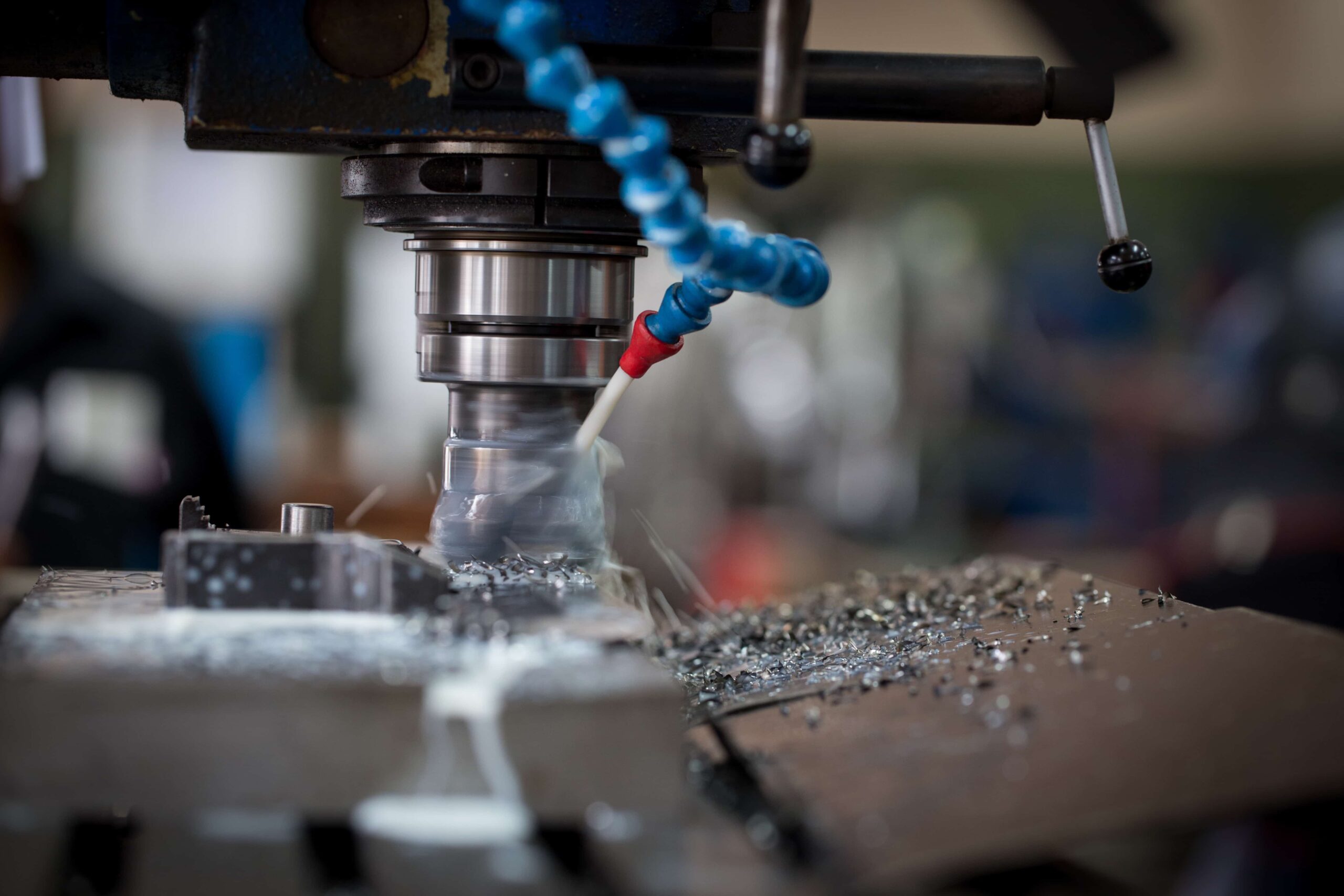
Cutting fluids and lubricants share some similar qualities, but there are some key differences between these solutions. The most obvious way that cutting fluids and lubricants differ is that cutting fluids are designed to lubricate the interface that exists between the chip and the cutting edge of the cutting tool in metalworking, while lubricants are engineered to lubricate in between two hard material surfaces, reducing friction.
Cutting fluids are solutions that can perform not only as lubricants but as coolants as well. While a lubricant can offer cooling properties, its main role is to aid in friction reduction which can lead to unwanted wear and poor mechanical performance.
In this blog, we’ll examine the nature of both these solutions in-depth, comparing them while noting both their similarities and differences. Read on to gain a deeper understanding of these products.
Understanding what a cutting fluid is
Cutting fluids are a type of lubricant and coolant that is designed to facilitate effective metalworking processes, for example, stamping and machining. There are a diverse range of cutting fluids and they can be found in a vast selection of formats and states suited to specific applications. For example, cutting fluids can be found sold as oils, pastes, oil-water emulsions, gels, aerosols and even gases.
Usually, cutting fluids are formulated from petroleum distillates, plant oils, animal fats, air and water or other natural ingredients in their raw state. Petroleum-based mineral oils (or MO, for short) are the most used cutting fluids. However, they require proper usage to avoid environmental and operator harm. Today, sustainable bio-cutting fluids (BCF) are an environmentally friendly alternative that is now being adopted by many operations looking to reduce their impact. Studies show that BCF can perform better when it comes to cutting force, coefficient of friction, feed force, and workpiece surface roughness in comparison to MO.
It’s worth noting that according to different application for products, the name given to cutting fluid can sometimes change. As a result, it may be referred to as not only cutting fluid, but also cutting oil, coolant, lubricant and cutting compound.
Comparing cutting fluid with lubricant
While it may depend on the type of workpiece material involved, cutting fluids can be advantageous for most machining and metalworking processes. For example, cutting fluids can be beneficial to produce both brass and cast iron, when these metals must be machined dry. In such a scenario, cutting fluid is used to keep the workpiece at a stable temperature (typically at an extremely warm temperature). It can also maximise the lifespan of the cutting tip via lubrication of the tool’s working edge and through effective reduction of tip welding. The fluid can also ensure safety during tool handling and prevent corrosive forces like rust forming on cutters and other machine parts for extended equipment longevity.
Defining lubricants
The term lubricant refers to a substance that can help reduce the friction caused when moving surfaces make contact. This process also reduces the heat generated by the surfaces as they move. Lubricants can also keep systems clean, removing unwanted foreign particles from systems and seal parts against contaminants. As lubricants flow through mechanical systems, they collect unwanted debris and ferrying it away from critical work areas, enhancing performance and operational efficiency.
Lubricants can take many forms. They can be bought as oils of different viscosity, greases which are ideal for systems with hard-to-reach components, but also as sprays. While lubricant is a general term, it can encompass a wide range of solutions from hydraulic fluids and gear oil to an aerosol containing WD40.
Are there similarities between lubricants and cutting fluids?
Cutting fluids and lubricants share a great deal of common ground in the services they can provide. For instance, both solutions can perform as lubricating agents and can effectively reduce friction. Additionally, they can both cool excess heat that is generated by the working parts of machinery. Finally, they both have the capacity to act as a rust preventative, protecting equipment from water contamination that can cause damage and shorten its overall active service life.
Exploring the differences between lubricants and cutting fluids
Cutting fluids are versatile substances that are designed for the metalworking industry specifically, while a lubricant is less specialised. These built-for-purpose fluids are designed to serve efficiently both as lubricants and coolants. While a general lubricant is an all-purpose solution, it is not designed to answer the exacting operational challenges found in the metalworking sector.
Fluids are formulated to create a stable operating temperature optimising mechanical performance and enabling precision work by offering greater control of both the tool and workpiece. They are designed to lubricate in extreme environments and answer specific threats to productivity found in metalworking like chip soldering and tool wear. In contrast, standard lubricants are designed to mitigate friction between moving mechanical parts.
To sum up, while cutting fluid is a lubricant, it has been specially engineered to offer the attributes required by a lubrication solution for metalwork, while lubricants are a more general solution.








































